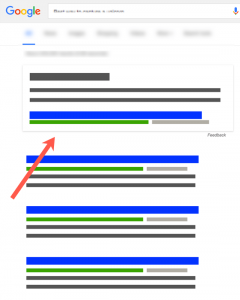
The information in this article applies to U.S. sellers and sellers who remit sales tax in the U.S. only.
If you’re an online retailer, chances are you have to deal with sales tax.
And by “deal with sales tax” we mean register for sales tax permits, figure out when and how much sales tax to collect, and make sure you file your sales tax returns on time, every time.
It’s enough to make your income tax requirements seem like an April breeze.
To add to the stress, January is an especially taxing time for online stores – pun intended.
No matter if the state(s) in which you are required to file a sales tax return asks you to file monthly, quarterly or annually, the first month of the year is traditionally a sales tax due date for just about everyone. And here you thought you were going to get to enjoy a respite after the holiday avalanche – not so fast.
Sales tax can be tricky – especially for sellers who only deal with it once a year. So to put your mind at ease, we developed a step-by-step guide to handling sales tax this January and beyond.
Step 1: Figure out where you have sales tax nexus
Sales tax nexus is just a fancy way of saying a “significant presence” in a state.
Forty-five states and the District of Columbia require merchants to collect a sales tax, and that means you, as an online seller, must collect sales tax in states where you have nexus.
Figuring out your nexus is one of the first steps a new online seller must take. It’s pretty easy to see that if you operate out of a state, you have a significant presence there and thus have nexus.
But, you may also have nexus in a state if you have an office or employee there, if you store goods in a warehouse there or perhaps if you travel across state lines for a craft fair or tradeshow.
The line here can blur, making it hard to figure out where you have nexus.
Here are some questions you can ask yourself to determine whether you have sales tax nexus in a specific state:
In which states do I have…
- An office?
- A store or other physical location?
- An employee or employees?
- Products stored in a warehouse or other venue?
- Sales at a trade show, craft fair or other physical location?
After asking yourself these questions, you’ll have a list of one or more states in which you will more than likely have sales tax nexus. Check here for a list of what creates sales tax nexus in every state. If you have any questions about nexus, you should contact your state’s Department of Revenue.
Step 2: Register for a sales tax permit
If you have nexus in a state, that state requires you to register for a sales tax permit before you begin collecting sales tax.
Head back over to your state’s Department of Revenue (or equivalent state agency) and register for your permit to collect sales tax.
States use sales tax collected from all retailers with nexus to pay for public utilities including education, transit and more. When you register, the state will tell you when they want you to file sales tax returns and pay what you’ve collected back to their coffers. Most of the time they’ll ask you to file either monthly, quarterly or annually.
Sometimes there’s no rhyme or reason to a state’s filing cadence. One state may ask you to file annually, while another wants to see a sales tax return from you monthly. Either way, filing appropriately for your state isn’t something you want to forget. Most states consider it unlawful for you to collect sales tax without a permit.
Step 3: Collect sales tax
Once you’ve determined where you have nexus and are signed up for your sales tax permit, it’s time to begin collecting sales tax from customers. Remember, you only have to collect sales tax from customers in states where you have sales tax nexus.
- Nexus in Texas + Buyer in Texas = Yes! Collect sales tax
- No Nexus in Texas + Buyer in Texas = No need to collect sales tax
You’ll need to set up your sales tax collection through the individual channels on which you sell.
Step 4: Report how much you’ve collected
Up until this point, sales tax has been pretty straightforward, but this is where things start to get more complex.
First, you need to figure out how much sales tax you’ve collected from your buyers. If you only sell on BigCommerce, pulling a report detailing all the sales tax you’ve collected is pretty cut and dry.
Things get more complicated, however, if you sell through multiple channels – i.e. on Etsy, Amazon, eBay – or accept payments in-person or via brick-and-mortar.
Beyond pulling together your omnichannel sales information, there’s still the matter of arranging the information in a way states want to see it. More than half of U.S. states are destination-based sales tax states, meaning they require sellers to charge sales tax based on the buyer’s ship to address.
Then, when it comes time to file a sales tax return, they require you, the merchant, to break down how much sales tax you collected by locality, such as by county, by city or by special taxing district – or all of the above.
If you choose to do this manually, it may involve looking up the zip codes of individual sales and comparing them to a tax table for your state to determine how to code each sales tax transaction. This can be a time consuming mess.
Fortunately, technology now exists to rescue you from spreadsheets and tax tables. There are solutions out there that allow you to integrate all of your sales channels quickly and easily calculate how much sales tax you collected from customers.
These solutions will even prepare a return-ready report or file your sales tax returns for you.

Full disclosure: TaxJar is a version of such technology. BigCommerce customers can install the app here.
Step 5: File your sales tax returns
The next step is to file your sales tax returns with the state or states where you have nexus. Remember, if you have to deal with sales tax, you’ll most likely have to file at least one sales tax return in January.
Make sure you file on time, too.
You’ll receive a penalty if you’re late.
Plus, some states offer a sales tax discount if you’re timely.
These states include Alabama, Arizona, Arkansas, Florida, Georgia, Illinois, Indiana, Kentucky, Louisiana, Maryland, Michigan, Mississippi, Missouri, New York, North Dakota, Ohio, Oklahoma, Pennsylvania, South Carolina, Tennessee, Texas, Utah, Virginia, Wisconsin and Wyoming.
Step 6: Know your deadlines!
Here’s a breakdown by state for when sales tax is due.
An (A) symbol means that state has an Amazon Fulfillment Center.
*indicates a due date pushed back due to a weekend or holiday
Alabama
- Monthly sales tax due on January 20, 2017
- Quarterly sales tax due on January 20, 2017
- Annual sales tax due on January 20, 2017
Arizona (A)
- Monthly sales tax due on January 20, 2017
- Quarterly sales tax due on January 20, 2017
- Annual sales tax due on January 20, 2017
Arkansas
- Monthly sales tax due on January 20, 2017
- Quarterly sales tax due on January 20, 2017
- Annual sales tax due on January 20, 2017
California (A)
- Monthly sales tax due on January 31, 2017
- Quarterly sales tax due on January 31, 2017
- Annual sales tax due on January 16, 2017
Colorado
- Monthly sales tax due on January 20, 2017
- Quarterly sales tax due on January 20, 2017
- Annual sales tax due on January 20, 2017
Connecticut (A)
- Monthly sales tax due on January 31, 2017
- Quarterly sales tax due on January 31, 2017
- Annual sales tax due on January 31, 2017
District of Columbia
- Monthly sales tax due on January 20, 2017
- Quarterly sales tax due on January 20, 2017
- Annual sales tax due on January 20, 2017
Florida (A)
- Monthly sales tax due on January 20, 2017
- Quarterly sales tax due on January 20, 2017
- Annual sales tax due on January 20, 2017
*(Florida considers sales tax returns due the 1st day of the month after the taxable period, and late by the 20th of the month. ACH payments must be initiated 3 days in advance of the due date.)
Georgia (A)
- Monthly sales tax due on January 20, 2017
- Quarterly sales tax due on January 20, 2017
- Annual sales tax due on January 20, 2017
Hawaii
- Monthly general excise tax due on January 20, 2017
- Quarterly sales tax due on January 20, 2017
- Annual sales tax due on January 20, 2017
Idaho
- Monthly sales tax due on January 20, 2017
- Quarterly sales tax due on January 20, 2017
- Annual sales tax due on January 20, 2017
Illinois (A)
- Monthly sales tax due on January 20, 2017
- Quarterly sales tax due on January 20, 2017
- Annual sales tax due on January 20, 2017
Indiana (A)
- Monthly sales tax due on January 20, 2017 for sales totals in excess of $ 1,000. For sales totals of less than $ 1,000, the monthly sales tax due date is January 30, 2017
- Quarterly sales tax due on January 20, 2017 for sales totals in excess of $ 1,000. For sales totals of less than $ 1,000, the quarterly sales tax due date is January 30, 2017
- Annual sales tax due on January 20, 2017 for sales totals in excess of $ 1,000. For sales totals of less than $ 1,000, the annual sales tax due date is January 30, 2017
Iowa
- Monthly sales tax due on January 31, 2017
- Quarterly sales tax due on January 31, 2017
- Annual sales tax due on January 31, 2017
Kansas (A)
- Monthly sales tax due on January 25, 2017
- Quarterly sales tax due on January 25, 2017
- Annual sales tax due on January 25, 2017
Kentucky (A)
- Monthly sales tax due on January 20, 2017
- Quarterly sales tax due on January 20, 2017
- Annual sales tax due on January 20, 2017
Louisiana
- Monthly sales tax due on January 20, 2017
- Quarterly sales tax due on January 20, 2017
- Annual sales tax due on January 20, 2017
Maine
- Monthly sales tax due on January 16, 2017*
- Quarterly sales tax due on January 16, 2017*
- Annual sales tax due on January 16, 2017*
Maryland (A)
- Monthly sales tax due on January 20, 2017
- Quarterly sales tax due on January 20, 2017
- Annual sales tax due on January 20, 2017
Massachusetts (A)
- Monthly sales tax due on January 20, 2017
- Quarterly sales tax due on January 20, 2017
- Annual sales tax due on January 20, 2017
Michigan
- Monthly sales tax due on January 20, 2017
- Quarterly sales tax due on January 20, 2017
- Annual sales tax due on February 28, 2017
Minnesota (A)
- Monthly sales tax due on January 20, 2017
- Quarterly sales tax due on January 20, 2017
- Annual sales tax due on February 6, 2017*
Mississippi
- Monthly sales tax due on January 20, 2017
- Quarterly sales tax due on January 20, 2017
- Annual sales tax due on January 20, 2017
Missouri
- Monthly sales tax due on January 31, 2017
- Quarterly sales tax due on January 31, 2017
- Annual sales tax due on January 31, 2017
Nebraska
- Monthly sales tax due on January 20, 2017
- Quarterly sales tax due on January 20, 2017
- Annual sales tax due on January 20, 2017
Nevada (A)
- Monthly sales tax due on January 31, 2017
- Quarterly sales tax due on January 31, 2017
- Annual sales tax due on January 31, 2017
New Jersey (A)
- Monthly sales tax due on January 20, 2017
- Quarterly sales tax due on January 20, 2017
- Annual sales tax due on January 20, 2017
New Mexico
- Monthly sales tax due on January 25, 2017
- Quarterly sales tax due on January 25, 2017
- Annual sales tax due on January 25, 2017
New York
- Monthly sales tax due on January 20, 2017
- Quarterly sales tax due on March 20, 2017
- Annual sales tax due on March 21, 2017
North Carolina
- Monthly sales tax due on January 20, 2017
- Quarterly sales tax due on January 31, 2017
North Dakota
- Monthly sales tax due on January 31, 2017
- Quarterly sales tax due on January 31, 2017
- Annual sales tax due on January 31, 2017
Ohio (A)
- Monthly sales tax due on January 23, 2017
- Quarterly sales tax due on January 23, 2017
- Semi-annual sales tax due on January 23, 2017
Oklahoma
- Monthly sales tax due on January 20, 2017
- Quarterly sales tax due on January 20, 2017
- Annual sales tax due on January 20, 2017
Pennsylvania (A)
- Monthly sales tax due on January 20, 2017
- Quarterly sales tax due on January 20, 2017
- Annual sales tax due on February 22, 2017
Rhode Island
- Monthly sales tax due on January 20, 2017
- Quarterly sales tax due on January 20, 2017
South Carolina (A)
- Monthly sales tax due on January 20, 2017
- Quarterly sales tax due on January 20, 2017
- Annual sales tax due on January 20, 2017
South Dakota
- Monthly sales tax due on January 20, 2017 (if filing on paper) & January 25, 2017 if filing and paying online
- Quarterly sales tax due on January 20, 2017 (if filing on paper) & January 25, 2017 if filing and paying online
- Annual sales tax due on January 20, 2017 (if filing on paper) & January 25, 2017 if filing and paying online
Tennessee (A)
- Monthly sales tax due on January 20, 2017
- Quarterly sales tax due on January 20, 2017
- Annual sales tax due on January 20, 2017
Texas (A)
- Monthly sales tax due on January 20, 2017
- Quarterly sales tax due on January 20, 2017
- Annual sales tax due on January 20, 2017
Utah
- Monthly sales tax due on January 31, 2017
- Quarterly sales tax due on January 31, 2017
- Annual sales tax due on January 31, 2017
Vermont
- Monthly sales tax due on January 25, 2017
- Quarterly sales tax due on January 25, 2017
- Annual sales tax due on January 25, 2017
Virginia (A)
- Monthly sales tax due on January 20, 2017
- Quarterly sales tax due on January 20, 2017
- Annual sales tax due on January 20, 2017
Washington (A)
- Monthly sales tax due on January 25, 2017
- Quarterly sales tax due on January 31, 2017
- Annual sales tax due on January 31, 2017
West Virginia
- Monthly sales tax due on January 20, 2017
- Quarterly sales tax due on January 20, 2017
- Annual sales tax due on January 20, 2017
Wisconsin (A)
- Monthly sales tax due on January 31, 2017
- Quarterly sales tax due on January 31, 2017
- Annual sales tax due on January 31, 2017
Wyoming
- Monthly sales tax due on January 31, 2017
- Quarterly sales tax due on January 31, 2017
- Annual sales tax due on January 31, 2017
It’s true: sales tax is complex. But if you can run an online store and turn a profit, then you can master this nitpicky administrative task. Do you have questions or comments about sales tax? Let us know in the comments.
Digital & Social Articles on Business 2 Community(25)









